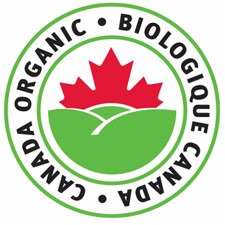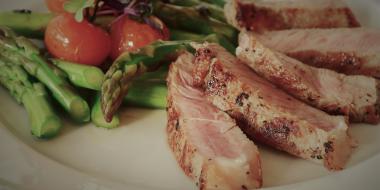Looking for a nice steak to throw on the BBQ but don't know what all those labels attesting to the meat's ethical production mean? We are more confused today about food choices than ever before. Walk down any aisle in a grocery store, and you’ll be bombarded by hundreds of emblems and health claims that all make the products sound like they’ve fallen from a natural food heaven. No doubt, we are in an era of marketing genius. Yet, I can tell you from personal experience and from the discussions I have every day with customers walking into my store, food sensitivities and autoimmune diseases are at record highs. People genuinely want to eat better. They care about their health, but they don’t know where to look for reliable advice. My specialty is meat, and steak season is at its peak, so in this article I’m going to focus on beef. You’ll learn which terms used out there to describe steaks have value, and which ones have none. Let’s start with the granddaddy of all food terms...

Organic
The term “organic” is the only term in Canada that is clearly defined and has significant meaning. I’ve heard people say that “organic” today is watered down from what it used to mean. Perhaps that is true. But the fact remains that the use of the term Organic (with a capital “O”) accompanied with the “Canada Organic” emblem means something – actually, a great deal. The use of the term “Organic” is governed by federal legislation called the Organic Products Regulations 2009. In order for a farmer or producer to use the Canada Organic logo, it must develop a fully auditable record-keeping system allowing an inspector to trace products from seed to plate, and it must be approved by a Canadian Food Inspection Agency-appointed certification body. Organic agriculture is a holistic approach to production which promotes and enhances biodiversity, protects long-term soil health and respects ecological balance through the use of environmentally and ecologically sustainable practices. It has been proven that Organic food is healthier. If you are buying an Organic steak, you will know that the cow that it came from was raised without any hormones or antibiotics, its food was free from synthetic pesticides, fertilizers, and GMOs, and overall was treated humanely. The Canada Organic Standard is recognized by both the EU and the US as equivalent – the only certification system to achieve this broad recognition.
Grass-fed & Grass-finished
Ruminant animals (like cows and sheep) are endowed with the ability to convert grasses into proteins and fats, whereas humans cannot. This is the reason why raising beef on pasture can and should be part of a sustainable agricultural system. Efficient grass digestion is achieved in these animals in their rumen, which is essentially a big fermentation tank inside their bodies. Not only can cows digest grass, it is what nature intended them to digest. It is beyond the scope of this article to explain why feeding corn and grain to cattle ranks amongst the most short-sighted ideas in the history of western civilization. I’ll just summarize by saying that beef raised 100% on grass are healthy animals that produce healthy steaks.
Now, getting to the crux of the terms “grass-fed” and “grass-finished”. Unfortunately these terms are not regulated and have no clear definition. The commonly understood definition in the industry is that “grass-fed” refers to livestock that have been fed grass and not confined to a feedlot system. “Grass-finished” means animals spend their final weight-gain stage on grass (and either did or did not eat grains during their lifetimes).
If those definitions are indeed the generally accepted ones, then the term “grass-fed” is utterly worthless when used to describe meat like beef. Reality check: 100% of cattle do consume grass during their lives and therefore, 100% of beef on the market can be marketed as “grass-fed”. Any consumption of grains will alter the pH inside their rumen and affect the health of that animal and nutritional composition of its resulting meat. It is unfortunate that there is a plethora of meat sold in Canada marketed as “grass-fed” that has been finished on grains and corn, lending to the perception that that beef is healthier when, in fact, it is absolutely not. Similarly, “grass-finished” does not speak to the length of time the cattle ate grass exclusively. Did it eat grains until a week before slaughter, and then only grass?
At my place of business, we have always used the phrase “100% Grass-fed”. If we sell a cut of beef in our store using this term, you can be assured that the animal has only consumed grass. The bottom line is that whenever you see the term “grass-fed”, you need to ask questions. Further, in the absence of more information, there is the possibility of herbicides or other chemicals having been sprayed on the pastures which end up in the meat. Ask questions. If you don’t get the answers you’re looking for, buy elsewhere.
Corn-fed & Grain-fed
As explained above, cows are designed to digest grass. Therefore, “corn-fed” and “grain-fed” is not a positive health attribute when used to describe meat from ruminant animals. I would suggest that if you are buying corn- and/or grain finished beef, stick to Organic so that the corns and grains consumed are non-GMO and free from pesticides, fertilizers and all the synthetic chemicals.
Farm-raised
Watch for any product labels with the term “farm” on them.
There is no legal regulation – neither in Canada, the U.S., nor as far as we know anywhere else in the world – that governs the use of the word "farm". The use of the word "farm" in any form, whether it accompanies someone’s name, the name of a place, the name of a cloud, or the name of a saint, says nothing about where the meat is from, how animals were raised, what they ate, or any other useful piece of information and certainly does not represent meat raised to any specific standards, or lack thereof.
Natural and Naturally Raised
Doesn’t the fact that the animal was breathing at some point make it “natural”? The Canadian Food Inspection Agency defines “natural” and “naturally raised” as animals raised with minimal human intervention. By definition, raising a farm animal is an expression of human intervention. Therefore, no beef should be labelled, legally, as “natural” or “naturally raised.”
Pasture-raised
This term should mean that the cows roam in a natural environment and eat forage. It is also another unregulated term and has no clear meaning. Further, if beef cattle were raised on pasture, then moved to a massive feedlot operation they still can be “pasture-raised”, can’t they? Ask questions to paint the complete picture.
Antibiotic-free
Include in this any phrases that contain the word “antibiotic”.
It is estimated that 88% of antibiotics produced or imported into Canada are given to animals. That’s not good. Technically, all animals that have met a specific withdrawal period prior to being slaughtered can be called “antibiotic-free” and, therefore, let’s throw that term out the window as being meaningless.
The phrase “raised without the use of antibiotics” should mean the animal did not receive antibiotics from birth to death. And that’s fantastic.
“Fed no antibiotics” may imply that the animal was raised without the use of antibiotics, when, in fact, the animal may have received antibiotics through injection or spraying. Tricky.
Hormone-free
Again, watch for any other phrase that contains the word “hormone,” such as "raised without growth hormones."
In Canada, hormones are permitted in non-organic beef cattle, but prohibited in chickens. So, if you see “raised without the use of added hormones” or something to that extent on a chicken product (whether it be poultry or eggs), not only is that phrase misleading because no chicken in Canada should ever be given hormones, it is also illegal. The label should say, “Like other chickens, these chickens were raised without the use of hormones".
The use of hormonal growth promoters in beef cattle is an issue that has sparked much debate around the world. They are approved for use in Canada and the United States. However, the use of hormonal growth promoters is banned in the European Union. Growth implants that add growth promoting hormones is, unfortunately, very widespread throughout Canada and the U.S. Look for beef that has been raised without growth hormones.
Angus, Kobe, and Any Breed-specific Names
There are countless breeds of beef in the world. Breed selection is a key part of the meat industry when certain traits are desired. Our farmers in New Zealand, for example, raise the Wagyu breed (famous in Kobe, Japan) – 100% Grass Fed beef that end up with wonderful marbling. However, breed selection, in and of itself, says nothing about how the animal was raised, what it ate, how it was killed, or any other health-relevant information.
A, AA, AAA or Prime
In the 1920s, the beef industry created a voluntary grading system. The grading of beef in Canada to be either Canada A, Canada AA, Canada AAA, or Canada Prime is perhaps one of the biggest scams in food labelling. Ever. This grading system essentially measures the amount of intramuscular fat, or “marbling.” The grade names above can be interpreted to mean “lean”, “moderately fat”, “fat”, and “really fat”, none of which say anything about how the animal was raised, what it ate, how it was slaughtered, or any important information.
The bottom line? Simply stick with certified Organic or 100% grass-fed from sources you trust. Other phrases are (often deliberately) confusing and misleading. Above all else, never hesitate to ask questions and get the answers you need to make an informed decision.





